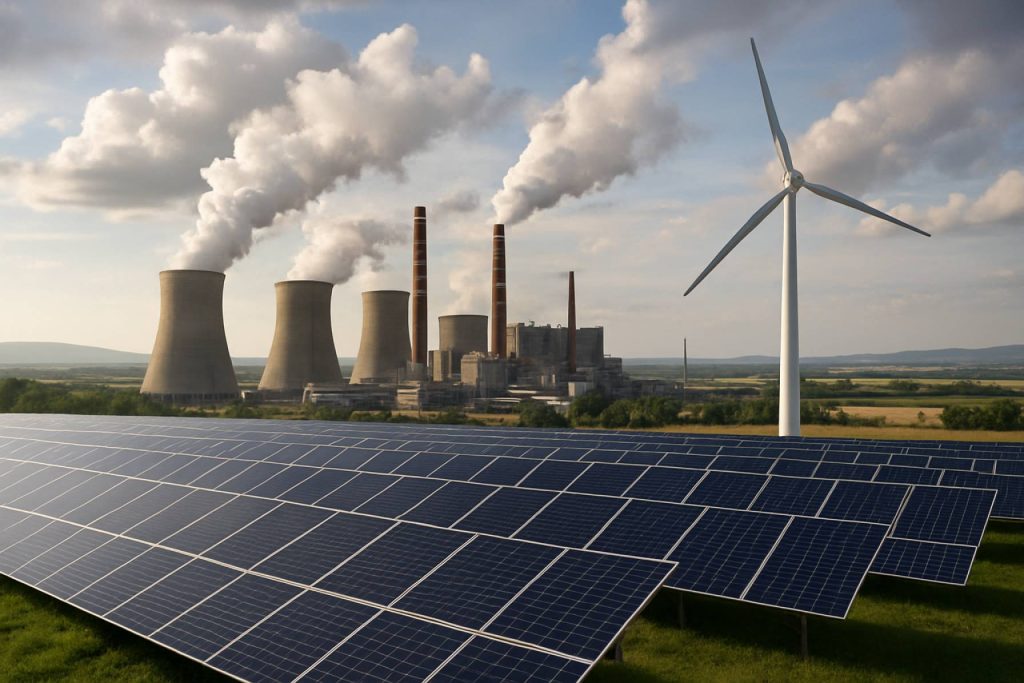
Unlocking a Greener Future: How Digital Innovation Is Set to Transform Energy in Eastern Europe and Central Asia by 2030
New UNECE report reveals $150B investment could slash emissions 70% and energy costs 80% with smart grids and digital innovation by 2030.
| Quick Facts |
|---|
| Investment Needed: $150B by 2030 |
| Emission Reduction Potential: Up to 70% |
| Possible Energy Cost Decrease: Up to 80% |
| Current Fossil Dependency: 60% of regional mix |
Eastern and South-Eastern Europe, the Caucasus, and Central Asia are on the cusp of the most ambitious energy transformation in decades. According to a groundbreaking UNECE study, this region has the potential to slash its carbon emissions by up to 70% and cut energy bills by as much as 80%—but only if it embraces full-scale digitalization and renewable integration by the end of the decade.
Today, coal and gas still dominate the energy landscape in countries like Albania, Belarus, Georgia, Kyrgyzstan, North Macedonia, Republic of Moldova, and Ukraine. Legacy infrastructure, much of it dating to the Soviet era, strains under increasing demand and extreme weather.
Smart grids, Artificial Intelligence (AI), Internet of Things (IoT), Digital Twins, and Virtual Power Plants promise to flip this script. The new UNECE study, unveiled at a workshop in Minsk in May 2025, doesn’t just highlight the challenge—it maps out exactly what needs to happen, and what’s at stake if it doesn’t.
UNECE and UNDP are urging governments to seize digital opportunity and propel these regions towards a cleaner, cheaper energy future.
Q: What Are the Biggest Hurdles Facing Energy Transformation in the Region?
– Outdated Infrastructure: Over 60% of Belarus’s thermal power plants are over 30 years old; in Georgia, electricity lines average more than three decades in age, causing transmission losses as high as 12%.
– Energy Security Risks: Moldova relies on imports for nearly 70% of its power, while Belarus sources 50% of its needs from Russian gas.
– Funding Shortfalls: Only a fraction—5% in Belarus, for example—of necessary renewables investment has been secured. Albania’s $300 million solar and wind projects struggle to get financed.
– Skills Gap: A workforce deficit in renewables and digital expertise—up to 30% of sector professionals in Georgia lack needed training.
– Health and Climate Fallout: Coal plants in Belarus alone emit 8 million tonnes of CO2 annually. North Macedonia’s heavy coal use keeps air pollution among Europe’s highest.
How Can Digital Technologies Deliver the Energy Transition?
Imagine a grid that predicts and prevents blackouts, reroutes clean power seamlessly, and keeps hackers at bay—all thanks to digital technologies:
– Artificial Intelligence analyzes demand in real time, optimizing power flows.
– IoT Sensors track every link in the grid, catching failures before they start.
– Digital Twins test upgrades virtually, minimizing costly setbacks.
– Virtual Power Plants aggregate renewables—even from homes and businesses—to stabilize supply and demand.
– Smart Grids communicate instantly across borders, helping regions share renewable surpluses and avoid shortages.
Strategically, UNECE recommends focusing on:
1. Retrofitting Old Infrastructure: Leveraging digital controls to cut waste and boost efficiency.
2. Hybrid Energy Models: Combining gas with hydrogen to bridge the transition.
3. Boosting Regional Interconnection: Projects like the Trans-Caspian high-voltage line could stitch countries together, creating a resilient, flexible energy market.
Q: What Policy Actions Are Needed NOW?
– Massive Investment: Secure international and domestic funding for new projects and upgrades.
– Talent Pipeline: Train tens of thousands in digital, AI, and renewable tech.
– Equity and Sustainability: Ensure that no workers or communities are left behind in the race for clean power.
– Cybersecurity: Shield an increasingly digital grid from emerging cyberthreats.
How Can Countries Start Their Own Digital Energy Revolution?
1. Audit Existing Infrastructure: Find the biggest sources of waste and outages.
2. Prioritize Quick Digital Wins: Install smart meters, predictive maintenance, and grid sensors.
3. Apply for Global Support: Leverage programs from organizations like IEA and World Bank.
4. Engage the Workforce: Launch training and upskilling campaigns.
5. Build Cross-Border Partnerships: Join regional digital grid initiatives.
Why Is a Human-Centered Approach Essential?
UNECE emphasizes that the transition must balance cutting-edge innovation with local needs and ethical considerations. The focus: equity, good jobs, and health, ensuring sustainable benefits for all.
It’s time for Eastern Europe and Central Asia to power ahead—digitally and sustainably. Don’t miss the opportunity to be part of the clean energy revolution.
Action Checklist for Policymakers and Investors:
- Assess and digitize aging power infrastructure
- Secure funding for smart grid and renewables integration
- Launch workforce development in digital and clean tech
- Strengthen regional energy and digital grid cooperation
- Prioritize policies that guarantee equity and cybersecurity
Learn more about UNECE’s plans for energy-efficient, digital futures at UNECE Energy Efficiency. The future is smart, clean, and collaborative—will you support it?



